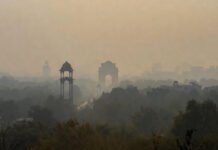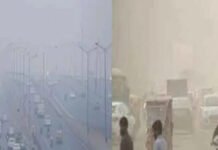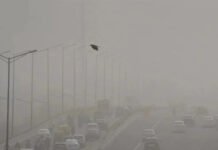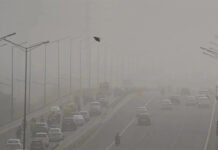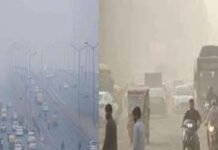Overview of Delhi’s Air Quality Crisis
In recent years, the capital city of India, Delhi, has faced an alarming escalation in air pollution, with particulate matter (PM2.5 and PM10) and other harmful pollutants reaching hazardous levels. As of recent air quality index (AQI) reports, the city has experienced some of its worst pollution days this season, posing a severe health risk to millions of residents. On October 20, forecasts suggest the air quality may degrade to “severe” levels, necessitating the swift implementation of stricter regulations under the Graded Response Action Plan (GRAP-2).
Current Air Quality Levels Across Delhi NCR
On Thursday, Delhi’s AQI surged beyond 250, entering the “poor” to “very poor” category. According to data from the Central Pollution Control Board (CPCB), Delhi’s AQI hit 285, indicating a dire need for immediate action. Other regions in the National Capital Region (NCR) showed similarly concerning figures:
- Faridabad: AQI at 148
- Ghaziabad: AQI at 252
- Greater Noida: AQI at 248
- Gurugram: AQI at 178
- Noida: AQI at 242
Specific localities in Delhi experienced even worse pollution, with AQI levels breaching 300 in many areas:
- Vivek Vihar: AQI 332
- Shadipur: AQI 338
- Punjabi Bagh: AQI 321
- Patparganj: AQI 352
- Narela: AQI 315
- Mundka: AQI 383
- Jahangirpuri: AQI 352
- Dwarka Sector 8: AQI 316
With such dangerous pollution levels, stringent measures are essential to curb further deterioration, especially as forecasts predict worsening air quality over the coming week. Factors such as low wind speeds and ongoing stubble burning in nearby regions could exacerbate the situation.
Air Quality Predictions for the Coming Days
Meteorological forecasts for October 18th and 19th predict that air quality will remain poor, while by October 20th, conditions are expected to worsen, with AQI likely entering the “severe” category. Over the following six days, pollution levels could range from “very poor” to “severe,” as unfavorable weather conditions—such as reduced wind speed and cooler temperatures—trap pollutants close to the ground, further intensifying the health risks.
Wind speeds between 4-10 kilometers per hour are forecasted over the next few days, insufficient to disperse pollutants effectively. Additionally, incidents of stubble burning and trash fires in and around Delhi could further aggravate the city’s air quality.
GRAP-2: Key Measures and Restrictions
In response to these alarming AQI levels, GRAP-2 (Graded Response Action Plan, Stage 2) is likely to be implemented soon, imposing several restrictions aimed at reducing pollution sources and protecting public health. Under GRAP-2, authorities have prepared a range of measures, including:
1. Restrictions on Diesel Generators
A blanket ban will be imposed on the use of diesel generators, except in cases of emergencies. This restriction includes:
- General Prohibition: Most diesel generators will be prohibited to curb emissions.
- Exemptions: Essential services, such as healthcare facilities (hospitals, nursing homes), railway stations, metro services, airports, and national security projects, will be allowed to use diesel generators.
- Retrofit Requirements: Generators with a capacity of over 800 KVA must undergo retrofitting to meet updated emission standards.
2. Increased Parking Fees to Reduce Private Vehicle Usage
To discourage the use of private vehicles, particularly those running on fossil fuels, parking fees will be raised significantly. This aims to motivate the public to utilize public transportation options instead of contributing to vehicular pollution.
3. Expansion of Public Transportation Services
Authorities will enhance the capacity and availability of CNG and electric buses, as well as metro services, to accommodate the expected increase in ridership due to parking restrictions and high pollution levels.
4. RWA (Residents Welfare Association) Interventions
Resident Welfare Associations will be encouraged to provide alternative heating methods for security guards. The use of coal, wood, or trash burning for warmth will be strictly prohibited, reducing additional emissions.
Emergency Services Unaffected
Despite the sweeping restrictions on diesel generator use, GRAP-2 outlines clear exemptions for emergency services to ensure uninterrupted operations. Facilities such as hospitals, nursing homes, metro services, airports, sewage treatment plants, and water pumping stations are allowed to use generators as necessary. Additionally, data centers and IT services are exempt from the restrictions to ensure the continuity of essential infrastructure.


